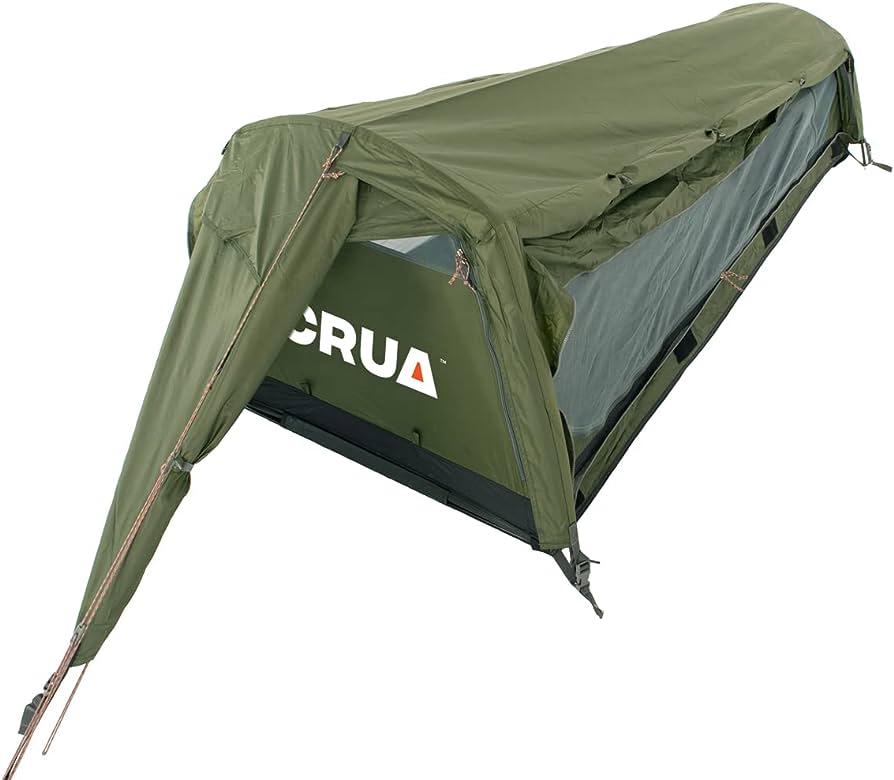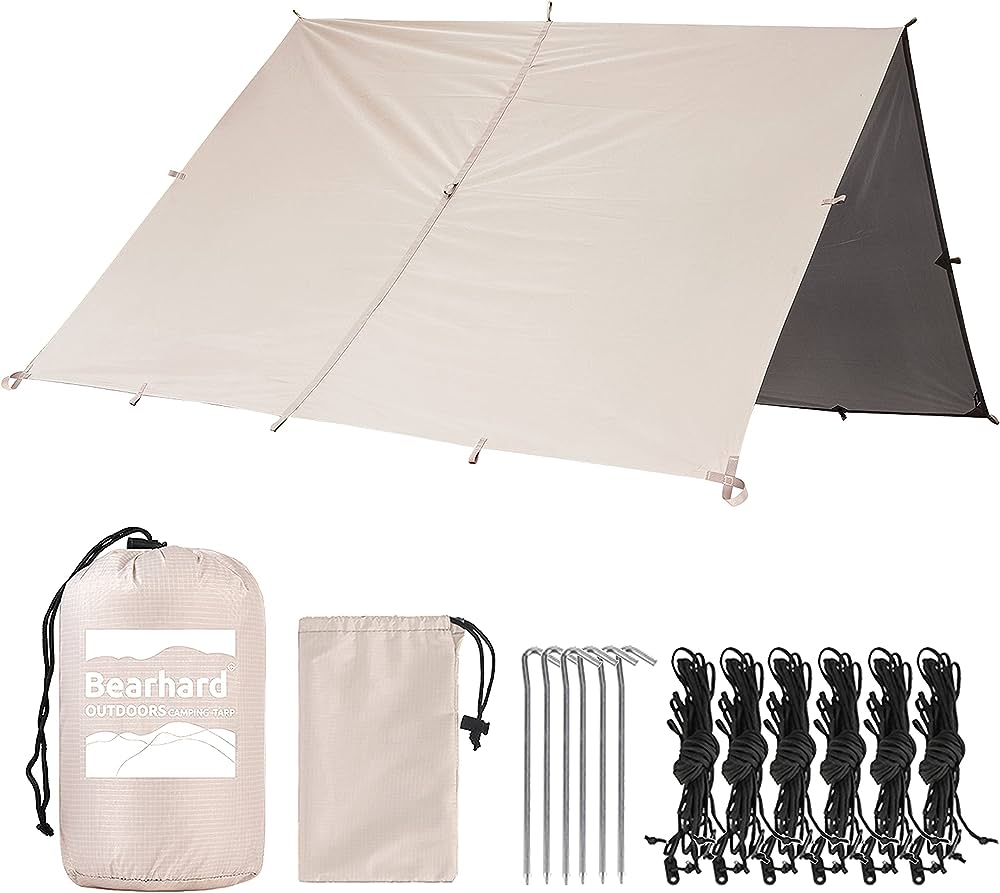- 8 Airplane Footrest Hammock!Travel comfortably - October 9, 2023
- top 7 Pool Float Water Hammock for a Relaxing Summer - October 9, 2023
- top 5 Space SaverSingle Hammock Stand Maximize Comfort and Space - October 9, 2023
Polyester hammocks offer durability and resistance to fading, while polypropylene hammocks provide excellent strength and UV resistance. When choosing between the two, consider your specific needs and preferences.
In terms of comfort, polyester hammocks tend to be softer and more comfortable to lie on, while polypropylene hammocks are often more lightweight and easy to transport. Additionally, polyester hammocks are available in a wide range of colors and patterns, allowing for customization, whereas polypropylene hammocks typically come in fewer color options.
Ultimately, both polyester and polypropylene hammocks have their own unique features and benefits, so it’s important to weigh your options and choose the one that best fits your requirements.
Differences Between Polyester And Polypropylene Hammocks
Polyester and polypropylene hammocks differ in their material composition. Polyester is known for its durability and ability to resist UV rays, making it a popular choice for outdoor use. On the other hand, polypropylene hammocks are lightweight and quick-drying, making them suitable for camping or beach trips.
Polyester and polypropylene are two popular materials used in the construction of hammocks. Each material has its own unique properties that can significantly impact the overall functionality and comfort of the hammock. In this section, we will explore the material composition, durability, and comfort of both polyester and polypropylene hammocks to help you make an informed choice.
Material Composition Of Polyester And Polypropylene Hammocks:
- Polyester hammocks:
- Made from synthetic fibers derived from petroleum, polyester hammocks offer excellent resistance to UV rays and are less prone to fading over time.
- Polyester hammocks also have good moisture resistance, making them suitable for outdoor use in various weather conditions.
- The material is known for its strength and durability, ensuring a longer lifespan for your hammock.
- Additionally, polyester hammocks are easy to clean as they are machine washable.
- Polypropylene hammocks:
- Polypropylene hammocks are crafted from thermoplastic polymer, making them lightweight and easy to transport.
- These hammocks are also highly resistant to water and moisture, making them an excellent choice for poolside or beach use.
- While polypropylene may not be as strong as polyester, it still offers sufficient durability for regular use.
- Unlike polyester hammocks, polypropylene hammocks are not machine washable and may require spot cleaning to maintain their appearance.
Durability Comparison Between Polyester And Polypropylene Hammocks:
- Polyester hammocks:
- Due to the nature of the material, polyester hammocks are more resistant to wear and tear, ensuring they can withstand regular use and exposure to the elements.
- They are less likely to stretch or sag over time, providing a consistent level of comfort.
- Polyester hammocks are also less susceptible to mold and mildew growth, making them ideal for humid environments.
- Polypropylene hammocks:
- While polypropylene hammocks may not be as durable as polyester, they still offer satisfactory strength and longevity.
- It is important to note that polypropylene hammocks may stretch slightly with extended use, but they can easily regain their original shape.
- Unlike polyester, polypropylene hammocks may be more prone to mold and mildew growth if not properly cared for.
Comfort And Breathability Of Polyester And Polypropylene Hammocks:
- Polyester hammocks:
- Polyester is known for its softness, providing a comfortable and cozy lounging experience.
- Additionally, polyester hammocks offer good breathability, allowing air to circulate and keeping you cool while relaxing.
- The fabric feels gentle against the skin, making it suitable for extended periods of use.
- Polypropylene hammocks:
- Polypropylene hammocks are also comfortable to use, although they may not offer the same level of softness as polyester.
- These hammocks provide decent breathability, allowing air to flow through the material and preventing excessive sweating.
- Polypropylene hammocks are particularly suitable for hot and humid climates due to their moisture-wicking properties.
Overall, both polyester and polypropylene hammocks have their own advantages and considerations. Polyester hammocks excel in durability and resistance to fading, while polypropylene hammocks offer lightweight portability and water resistance. Consider your specific needs and preferences when deciding which material is best for your hammock.
Factors To Consider When Choosing A Hammock
When deciding between a polyester and polypropylene hammock, important factors to consider include durability, comfort, and suitability for outdoor use. Polyester hammocks are known for their strength and resistance to fading and mildew, while polypropylene hammocks are lightweight and quick-drying, making them ideal for camping or beach trips.
Choose the hammock that best fits your specific needs and preferences.
When it comes to selecting a hammock, there are several important factors to consider. The right hammock can provide you with a comfortable and relaxing outdoor experience, but choosing the wrong one could lead to disappointment. To help you make an informed decision, here are some key factors you should take into account:
Weight Capacity
- Weight capacity is crucial to ensure that your hammock can safely support you. It is important to check the maximum weight capacity specified by the manufacturer before making a purchase.
- Consider factors such as the number of people who will be using the hammock and the weight of potential users. Keep in mind that the weight capacity should exceed the combined weight of the users to maintain safety.
Weather Resistance
- Weather resistance is another important consideration, especially if you plan to use your hammock outdoors. Different materials offer varying degrees of resistance to the elements.
- Polyester hammocks are known for their excellent resistance to UV rays, which helps prevent color fading and material degradation when exposed to direct sunlight.
- On the other hand, polypropylene hammocks are typically more resistant to moisture, making them a better choice for humid or rainy environments.
Maintenance And Care Requirements
- Taking care of your hammock properly can extend its lifespan and keep it in top condition. Different materials may have varying maintenance and care requirements.
- Polyester hammocks are generally easy to clean and maintain. They can often be machine washed or easily spot cleaned with soap and water.
- Polypropylene hammocks are also relatively low maintenance, as they are resistant to mold and mildew. Regular cleaning with mild detergent and water is usually sufficient to keep them in good shape.
When choosing a hammock, it is important to consider factors such as weight capacity, weather resistance, and maintenance requirements. By carefully assessing these factors, you can find the perfect hammock that suits your needs and provides you with years of relaxation and comfort.
Pros And Cons Of Polyester Hammocks
Polyester hammocks offer durability and resistance to fading, while polypropylene hammocks are known for their lightweight and quick-drying properties. However, polyester hammocks are prone to stretching and can retain heat, while polypropylene hammocks may not be as durable in harsh weather conditions.
It’s important to weigh these pros and cons when deciding between the two options.
Advantages Of Polyester Hammocks
- Durability and resistance to wear and tear: Polyester hammocks are known for their durability, making them a long-lasting option compared to other materials. They can withstand heavy use, making them suitable for outdoor environments and frequent use.
- UV resistance and colorfastness: Polyester is resistant to the harmful effects of sunlight, making it an excellent choice for hammocks meant for outdoor use. It does not fade easily, maintaining its vibrant color even after prolonged exposure to the sun.
- Easy to clean and maintain: Polyester hammocks are relatively easy to clean and maintain. They can be machine washed or spot cleaned with mild soap and water. Polyester fibers also resist stains, making them ideal for environments where spills and messes are common.
Disadvantages Of Polyester Hammocks
- Less breathable compared to other materials: One drawback of polyester hammocks is their breathability. They may feel less airy and can trap heat, causing discomfort during hot weather. This reduced breathability can make them less suitable for people who prefer a cooler, more breathable hammock experience.
- Can retain moisture and cause discomfort in hot weather: Polyester hammocks have a tendency to retain moisture, which can lead to increased discomfort, especially during hot and humid weather. This can result in a sticky or clammy feeling, making them less ideal for those seeking a hammock that offers breathability and ventilation.
Overall, polyester hammocks have their advantages in terms of durability, resistance to wear and tear, UV resistance, and easy maintenance. However, they may not be the best choice if breathability and moisture control are essential factors for you. Consider your specific needs and preferences when deciding between polyester and other materials for your hammock.
Pros And Cons Of Polypropylene Hammocks
Polypropylene hammocks offer durability and weather resistance, making them a great choice for outdoor use. However, polyester hammocks are softer and more comfortable, providing a better lounging experience. Consider your specific needs and preferences before deciding between the two options.
Polypropylene hammocks have gained popularity as a lightweight and versatile alternative to polyester hammocks. With their unique set of advantages and disadvantages, they offer a different experience for hammock enthusiasts. In this section, we will explore the pros and cons of polypropylene hammocks.
Advantages Of Polypropylene Hammocks:
- Lightweight and easy to transport: Polypropylene hammocks are significantly lighter than their polyester counterparts. This makes them perfect for backpacking trips or any situation where portability is essential.
- Moisture resistance and quick drying: One key advantage of polypropylene hammocks is their ability to resist moisture. When compared to polyester, they have superior water repellency and are less likely to retain moisture, making them quick to dry after exposure to rain or humid conditions.
- Breathable and comfortable in hot weather: Polypropylene hammocks offer excellent breathability, allowing air to circulate and keeping you cool and comfortable even in hot weather. This makes them an ideal choice for summer camping trips or lounging in your backyard under the scorching sun.
Disadvantages Of Polypropylene Hammocks:
- Less durable and prone to fraying: One of the downsides of polypropylene hammocks is their reduced durability. Unlike polyester hammocks, they are more susceptible to fraying and may not withstand heavy use or rough handling as well.
- Color may fade over time with exposure to sunlight: While polypropylene hammocks are initially vibrant and colorful, prolonged exposure to sunlight can gradually fade their hues. If exposed to direct sunlight for extended periods, the colors may lose their vibrancy and intensity.
Overall, polypropylene hammocks offer lightweight portability and excellent moisture resistance, making them a great choice for outdoor adventures. However, their durability and potential color fading should be taken into consideration when making a purchase decision. Consider your specific needs and preferences to determine if a polypropylene hammock is the right choice for you.
Choosing The Right Hammock For Your Needs
Choosing the right hammock for your needs can be a tough decision, especially when it comes to deciding between polyester and polypropylene hammocks. Each material has its own benefits and drawbacks, so it’s important to consider factors such as durability, comfort, and weather resistance before making your choice.
Polyester Vs Polypropylene Hammock:
Consideration Of Personal Preferences And Requirements:
- The first step in choosing the right hammock is to evaluate your personal preferences and requirements.
- Consider the purpose of the hammock, whether it’s for lounging, camping, or backpacking.
- Think about where you plan to use the hammock, such as in your backyard, at the beach, or in the mountains.
- Assess your preferred hammock size and weight capacity.
- Determine the ease of setup and take down that aligns with your needs.
Evaluation Of Durability, Comfort, And Maintenance Aspects:
- Durability:
- Polyester hammocks are known for their strength and resistance to tearing and abrasion.
- Polypropylene hammocks are also durable, but not as strong as polyester.
- Comfort:
- Polyester hammocks offer a soft and comfortable fabric that feels great against the skin.
- Polypropylene hammocks provide a more rigid and less flexible fabric.
- Maintenance:
- Polyester hammocks are generally easy to clean and maintain, with properties that resist stains and mildew.
- Polypropylene hammocks are low maintenance and resistant to moisture, making them suitable for outdoor use.
Cost Comparison Between Polyester And Polypropylene Hammocks:
- Polyester hammocks tend to be more expensive than polypropylene hammocks, mainly due to their durability and comfort.
- Polypropylene hammocks are often more budget-friendly options.
- Keep in mind that the cost may vary depending on the brand, size, and additional features of the hammock.
When it comes to choosing the right hammock for your needs, it’s essential to consider personal preferences and requirements. Evaluate aspects such as durability, comfort, and maintenance to make an informed decision. Additionally, take into account the cost comparison between polyester and polypropylene hammocks.
By considering these factors, you can select the hammock that best suits your needs, ensuring hours of relaxation and enjoyment.

Credit: issuu.com
Frequently Asked Questions For Polyester Vs Polypropylene Hammock
What Is The Best Fabric For A Hammock?
The best fabric for a hammock is usually nylon or polyester because they are durable, comfortable, and weather-resistant.
Is Polyester Good For Hammock?
Yes, polyester is a good choice for a hammock because it is durable, weather-resistant, and comfortable.
Which Is Stronger Polyester Or Polypropylene?
Polyester is stronger than polypropylene.
Which Is Better For A Hammock Cotton Or Polyester?
Cotton and polyester are both good for hammocks, but it depends on your personal preferences and needs.
Faq 1: Which Material Is Better For A Hammock, Polyester Or Polypropylene?
Polyester and polypropylene are both great choices, but it depends on your preferences. Polyester provides durability, while polypropylene offers better breathability.
Faq 2: Are Polyester Hammocks More Durable Than Polypropylene Hammocks?
Polyester hammocks tend to be more durable due to their strong fibers, making them resistant to wear and tear.
Faq 3: Are Polypropylene Hammocks More Breathable Than Polyester Hammocks?
Yes, polypropylene hammocks are more breathable, allowing for better airflow and preventing uncomfortable sweating during hot weather.
Faq 4: Which Material Is More Resistant To Uv Rays, Polyester Or Polypropylene?
Polyester is known for its excellent UV resistance, making it more suitable for outdoor use and long-lasting color preservation.
Faq 5: Can I Leave A Polyester Hammock Outdoors During Rainy Weather?
Yes, you can leave a polyester hammock outdoors during rainy weather. Its water-resistant properties enable it to withstand mild rain showers without damage.
Faq 6: Does Polypropylene Have Any Advantages Over Polyester For Hammocks?
Polypropylene hammocks generally weigh less and dry faster than polyester hammocks, making them more suitable for backpacking or camping trips.
Conclusion
To sum up, choosing between a polyester and polypropylene hammock ultimately depends on your personal preferences and specific needs. Both materials have their own set of advantages and disadvantages. Polyester offers durability, resistance to fading, and a softer feel, while polypropylene is known for its breathability and quick-drying properties.
Consider factors such as climate, intended use, and budget when making your decision. Additionally, make sure to check the quality and construction of the hammock, as that will also affect its overall performance and longevity. Whether you go for the cozy comfort of polyester or the airy breathability of polypropylene, investing in a high-quality hammock will undoubtedly provide you with countless hours of relaxation and enjoyment in the great outdoors.
So now that you have all the information, go ahead and make an informed choice that suits your unique preferences and needs.




